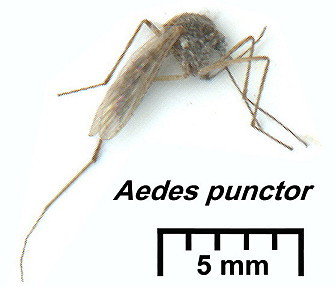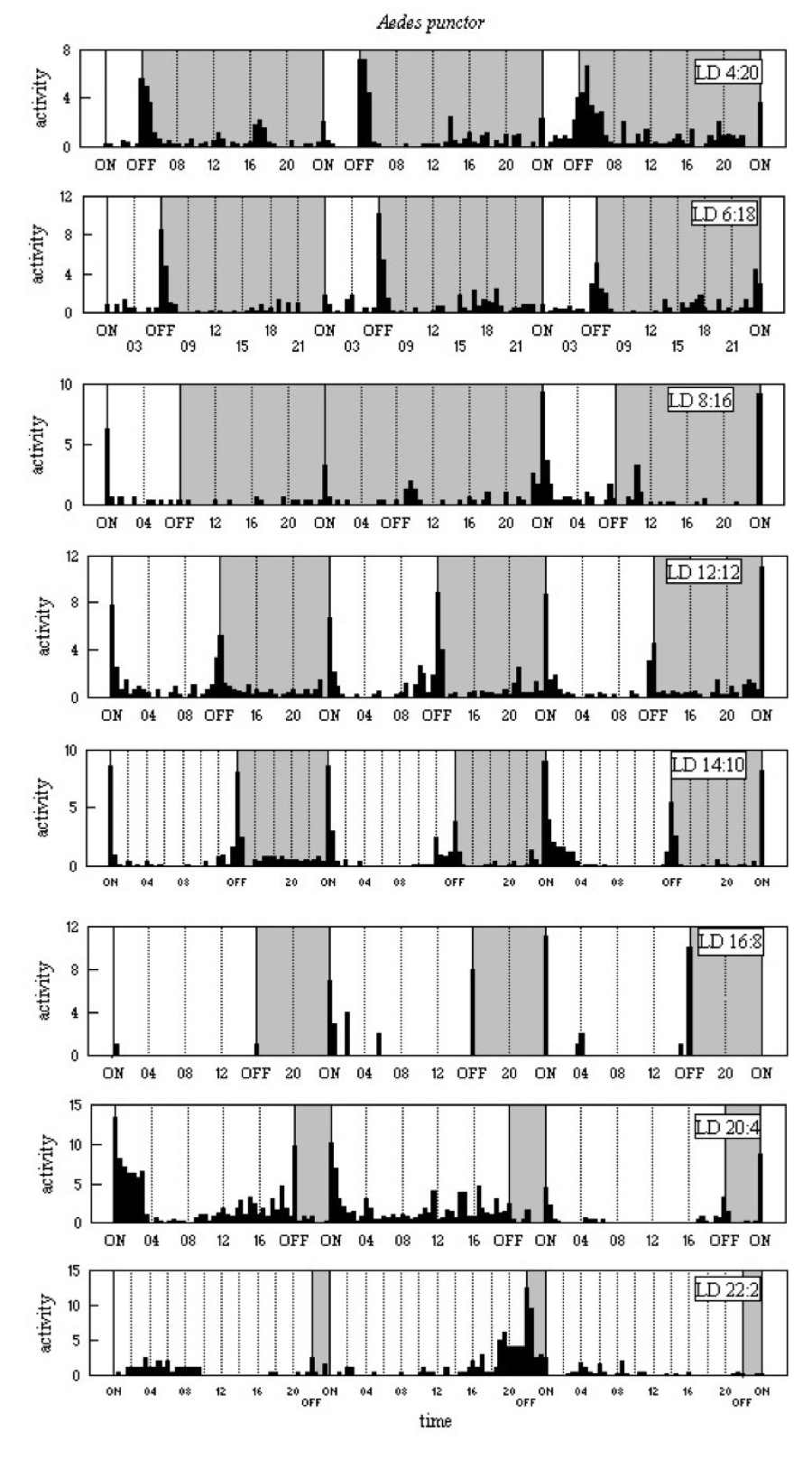Biological Clocks in Mosquitoes
|
 A
northern Holarctic species, type location Mackensie River, North West
Territories, Canada; found up to the northern limits of land in Europe
(71°N in Norway) and south to about 45°N in the Caucasus and Crimea
(Natvig, 1948; Stone et al., 1959). In the Americas it is found
slightly further south, but only at high altitudes, 3000-4000m in Utah
at 40°N (Carpenter & La Casse, 1955; Vockeroth, 1954). A univoltine
species, overwintering in the larval stage, and with the adults
occurring in Britain from April to October (Marshall, 1938). Described
as one of the most troublesome of sylvan species and a persistent biter
attacking man both by day and night (Covell & Shute, 1954).
A
northern Holarctic species, type location Mackensie River, North West
Territories, Canada; found up to the northern limits of land in Europe
(71°N in Norway) and south to about 45°N in the Caucasus and Crimea
(Natvig, 1948; Stone et al., 1959). In the Americas it is found
slightly further south, but only at high altitudes, 3000-4000m in Utah
at 40°N (Carpenter & La Casse, 1955; Vockeroth, 1954). A univoltine
species, overwintering in the larval stage, and with the adults
occurring in Britain from April to October (Marshall, 1938). Described
as one of the most troublesome of sylvan species and a persistent biter
attacking man both by day and night (Covell & Shute, 1954).
Experimental material
Adult females were readily trapped attacking man at Morden Bog, Dorset,
England (50°41'N) on the evenings of 24 and 25 July 1968 (sunrise 0516h
and sunset 2056h BST, daylength 15h40m) and these were used in
experiments from 29 July. Further females were trapped at Wimbledon
Common, Surrey, England (51°25'N) between 1900h and 2000h BST on 3
September 1968 (sunrise 0611h and sunset 1948h BST, daylength 13h37m)
and these were used in experiments from 4 September. Field activity at
both locations was more evident in the latter part of the dusk period.
Recordings were made with light-off at 2100h BST (July) or 2000h BST
(September).
Experimental regimes
LD 4:20, six females, recorded for days two to five, Wimbledon
specimens.
LD 6:18, four females, recorded for days two to five, Wimbledon
specimens.
LD 8:16, three females, recorded for days three to six, Dorset
specimens.
LD 12:12, six females, recorded for days two to five, Wimbledon
specimens.
LD 14:10, five females, recorded for days two to five, Wimbledon
specimens.
LD 16:8, one female, recorded for days three to six, Dorset
specimen.
LD 20:4, five females, recorded for days two to five, Wimbledon
specimens.
LD 22:2, three females, recorded for days two to six, Dorset
specimens.
Results and discussion
The activity patterns are shown in Figure A5 below. The dominant
pattern is bimodal with E and M peaks. Notably, in the
mid-range LD regimes the graphs show low levels of activity both
building up to and declining from the main activity in the half-hour E
and M peaks. Although the immediate post-light-on M peak
is not present in LD 6:18 and LD 4:20, there is a surge of activity
around 12-13h after light-off; this can be seen also at a lower level
in the regimes with L > 16h. The two populations, Dorset
in July and Wimbledon in September, showed similar amplitude and
patterns of activity. The form of the E and M peaks
in mid-range LD regimes suggests a truly crepuscular pattern of
activity and the light intensity used, 70 lux, is of the same order of
that when field activity onset has been observed.
Information on illumination level can be found in Dreisig (1980). This crepuscular pattern fits also with the field observations of Monchadskiļ (1950), who studied Ae. punctor in the subarctic (at 67°30'N) and found temperature to be a key factor affecting attack. Bright light > 40,000 lux depressed activity and a drop below 1500 lux stimulated activity. In warm days in July, when there was continuous daylight, peak activity was in the morning and evening, and the minimum was at night. In August, with dark nights, attack was intensive from evening to midnight but the onset of cold weather led to biting during the day only. Packer & Corbet (1989) carried out human-bait catches from 1.5 to 0.5h before sunset at Paddockmuir Wood, East Perthshire, Scotland (56°22'N), in 1984 and 1985. In both years, the first females were caught in early May but, whereas in 1984 the last females were caught on 4 September, in 1985 there was a second period of emergence which resulted in a fresh burst of female activity lasting from late August to early October. They found also that 98.3% of all females caught at bait were inseminated.
Figure A15

|
©1998, 2010 - Brian Taylor CBiol FSB FRES 11, Grazingfield, Wilford, Nottingham, NG11 7FN, U.K. Comments to dr.b.taylor@ntlworld.com |
href="\crhtml\aepunct.htm"